
Space Station Silhouette on the Moon
Add to Favorites
What's that unusual spot on the Moon? It's the International Space Station. Using precise timing, the Earth-orbiting space platform was photographed in front of a partially lit gibbous Moon in 2019. The featured image was taken from Palo Alto, California, USA with an exposure time of only 1/667 of a second. In contrast, the duration of the transit of the ISS across the entire Moon was about half a second. A close inspection of this unusually crisp ISS silhouette will reveal the outlines of numerous solar panels and trusses. The bright crater Tycho is visible on the lower left, as well as comparatively rough, light colored terrain known as highlands and relatively smooth, dark colored areas known as maria. Downloadable apps can tell you when the International Space Station will be visible from your area. APOD Turns 30!: Free Public Lecture in Cork, Ireland on June 24
2025-06-18 Eric Holland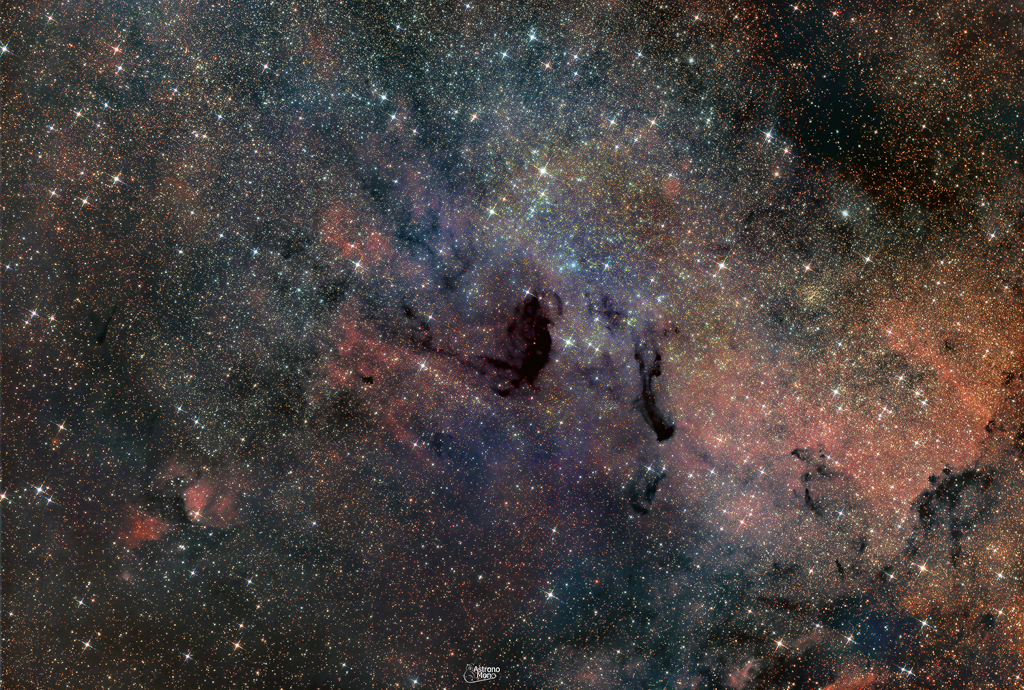
Messier 24: Sagittarius Star Cloud
Add to Favorites
Unlike most entries in Charles Messier's famous catalog of deep sky objects, M24 is not a bright galaxy, star cluster, or nebula. It's a gap in nearby, obscuring interstellar dust clouds that allows a view of the distant stars in the Sagittarius spiral arm of our Milky Way galaxy. Direct your gaze through this gap with binoculars or small telescope and you are looking through a window over 300 light-years wide at stars some 10,000 light-years or more from Earth. Sometimes called the Small Sagittarius Star Cloud, M24's luminous stars fill this gorgeous starscape. Covering over 3 degrees or the width of 6 full moons in the constellation Sagittarius, the telescopic field of view includes dark markings B92 and B93 near center, along with other clouds of dust and glowing nebulae toward the center of the Milky Way.
2023-06-28 Emmanuel Astronomono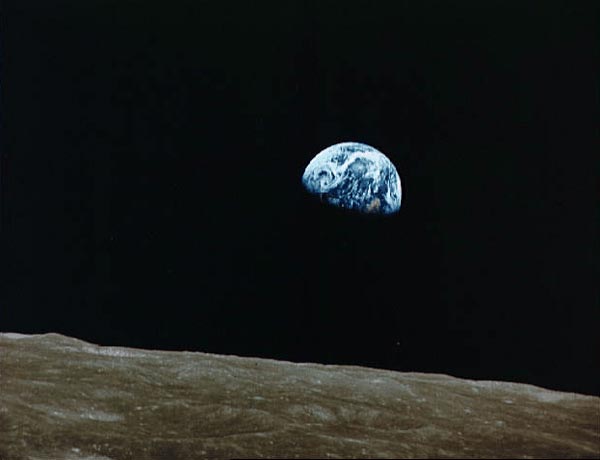
The Millennium that Defined Earth
Add to Favorites
When the second millennium began, people generally knew that the Earth was round, but few saw much of it beyond their local village. As the millennium progressed, humans mapped the continents, circumnavigated the globe, and determined the composition of the Earth. The Earth started as the center of everything, but became a planet placed in the Solar System, which became placed in a Galaxy, which became placed in the Local Group of Galaxies, which became placed in an expanse so vast we call it just the Universe. As millennium two ends people generally know what Earth looks like from afar, and how it is that all of humanity is confined to the surface of this fragile and watery globe.
2000-12-31
MWC 922: The Red Square Nebula
Add to Favorites
What could cause a nebula to appear square? No one is quite sure. The hot star system known as MWC 922, however, appears to be embedded in a nebula with just such a shape. The above image combines infrared exposures from the Hale Telescope on Mt. Palomar in California, and the Keck-2 Telescope on Mauna Kea in Hawaii. A leading progenitor hypothesis for the square nebula is that the central star or stars somehow expelled cones of gas during a late developmental stage. For MWC 922, these cones happen to incorporate nearly right angles and be visible from the sides. Supporting evidence for the cone hypothesis includes radial spokes in the image that might run along the cone walls. Researchers speculate that the cones viewed from another angle would appear similar to the gigantic rings of supernova 1987A, possibly indicating that a star in MWC 922 might one day itself explode in a similar supernova.
2012-12-16 Peter Tuthill (Sydney U.) & James Lloyd (Cornell)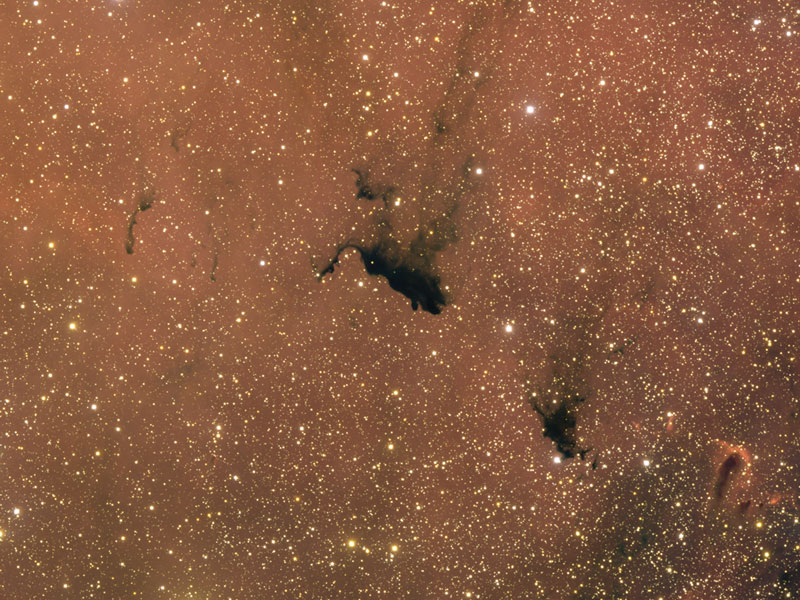
Molecular Cloud Barnard 163
Add to Favorites
It may look to some like a duck, but it lays stars instead of eggs. In the center of the above image lies Barnard 163, a nebula of molecular gas and dust so thick that visible light can't shine through it. With a wing span measured in light years, Barnard 163's insides are surely colder than its exterior, allowing conditions where gas can clump and eventually form stars. Barnard 163 lies about 3,000 light years from Earth toward the constellation of Cepheus the King. The red glow in the background results from IC 1396, a large emission nebula that houses the Elephant's Trunk Nebula. Finding Barnard 163 in an image of its greater emission nebula IC 1396 can be a challenge, but it's possible. News: Night and Day are Equal: Today is an Equinox
2007-03-21 T. Rector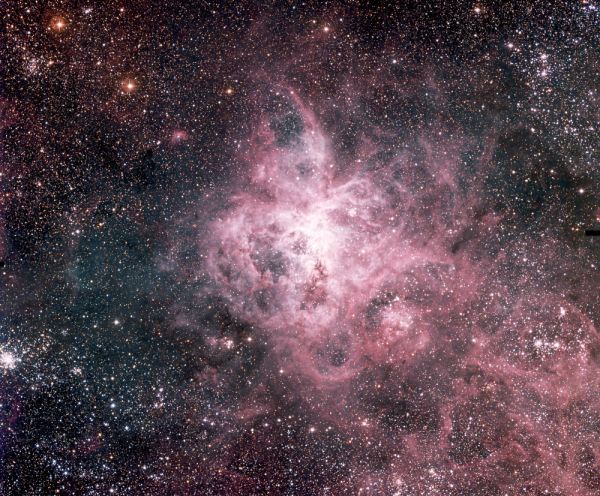
The Tarantula Zone
Add to Favorites
The Tarantula Nebula is more than 1,000 light-years across - a giant emission nebula within our neighboring galaxy the Large Magellanic Cloud. Inside this cosmic arachnid lies a central young cluster of massive stars, cataloged as R136, whose intense radiation and strong winds have helped energize the nebular glow and shape the spidery filaments. In this impressive color mosaic of images from the Wide-Field Imager camera on ESO's 2.2 meter telescope at La Silla Observatory, other young star clusters can be seen still within the nebula's grasp. Also notable among the denizens of the Tarantula zone are several dark clouds invading the nebula's outer limits as well as the dense cluster of stars NGC 2100 at the extreme left edge of the picture. The small but expanding remnant of supernova 1987a, the closest supernova in modern history, lies just off the lower right corner of the field. The rich mosaic's field of view covers an area on the sky about the size of the full moon in the southern constellation Dorado.
2003-08-23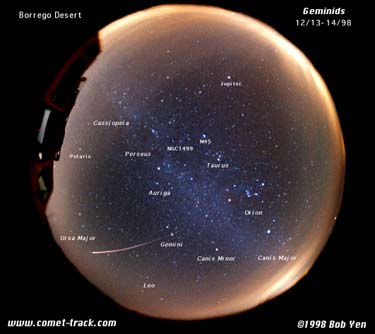
A Geminid From Gemini
Add to Favorites
The Leonid meteor shower was not the only good meteor shower this season. Earlier this month, the annual Geminids meteor shower peaked, featuring as many as 140 meteors per hour from some locations. Geminid meteors can be seen streaking away from the constellation of Gemini, as depicted in the above all-sky photograph. The origin of the Geminid meteors is somewhat uncertain but thought to be small bits broken off the unusual asteroid 3200 Phaetheon. Many observers reported that the 1998 Geminids were typically less bright than the 1998 Leonids, but appeared more bunched, with groups of two or three meteors sometimes appearing simultaneously. Next years' Geminids might be better yet.
1998-12-29 B. Yen (Comet-Track)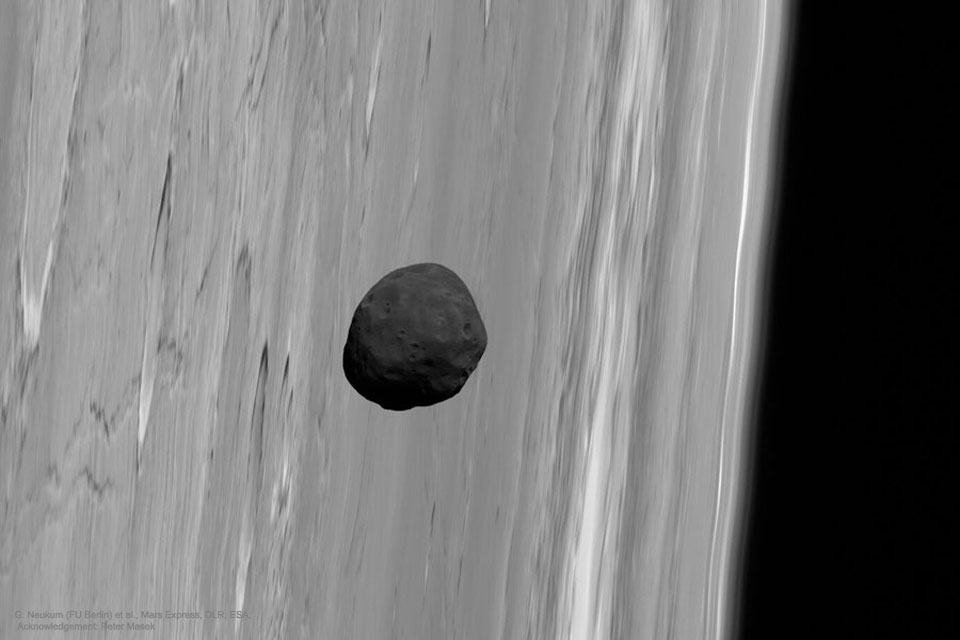
Martian Moon Phobos from Mars Express
Add to Favorites
Why is Phobos so dark? Phobos, the largest and innermost of two Martian moons, is the darkest moon in the entire Solar System. Its unusual orbit and color indicate that it may be a captured asteroid composed of a mixture of ice and dark rock. The featured picture of Phobos near the limb of Mars was captured in 2010 by the robot spacecraft Mars Express currently orbiting Mars. Phobos is a heavily cratered and barren moon, with its largest crater located on the far side. From images like this, Phobos has been determined to be covered by perhaps a meter of loose dust. Phobos orbits so close to Mars that from some places it would appear to rise and set twice a day, but from other places it would not be visible at all. Phobos' orbit around Mars is continually decaying -- it will likely break up with pieces crashing to the Martian surface in about 50 million years.
2020-11-08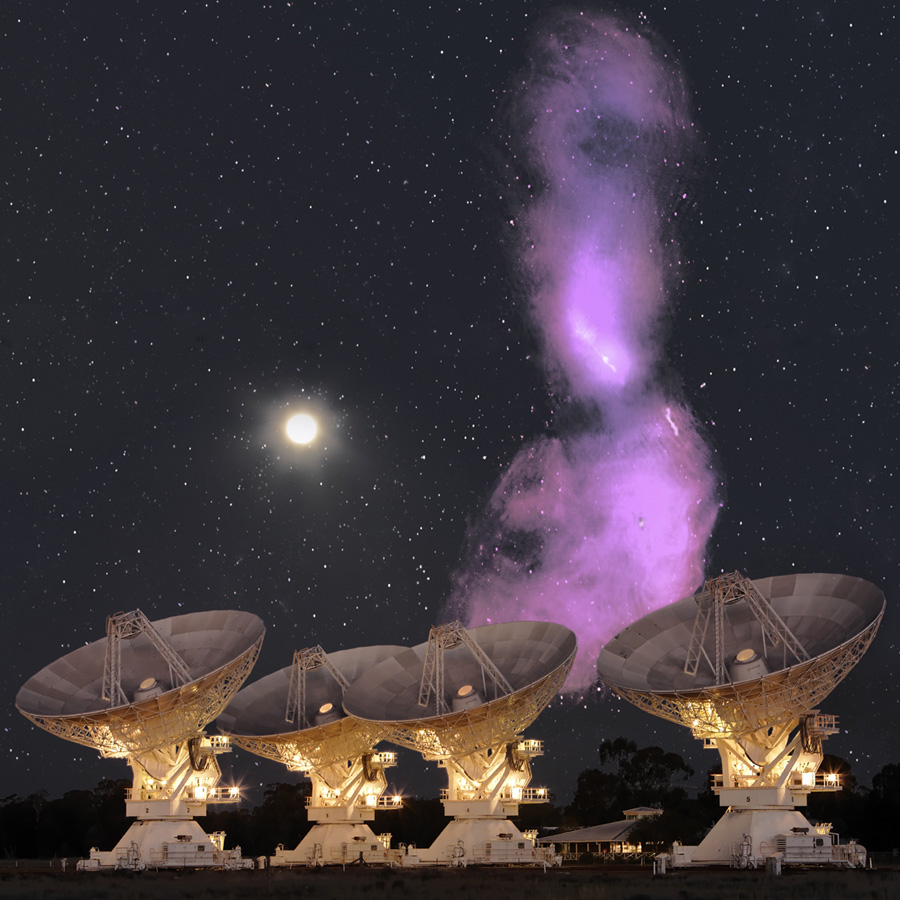
Centaurus Radio Jets Rising
Add to Favorites
What if you could see the huge radio jets of Centaurus A rising? The Cen A radio jets are not only over a million light years long, they occupy an angular area over 200 times greater than the full Moon in Earth's sky. The jets are expelled by a violent black hole millions of times the mass of our Sun embedded deep in the center of nearby active galaxy Cen A. Somehow, the black hole creates the fast moving jets as other matter falls in. In this picture, radio telescopes from the Australian Telescope Compact Array (ATCA) near Narrabri, NSW, Australia, were captured in front of a full Moon, with a radio image of Cen A superposed at its real angular size in the background. The above picture includes the most detailed map yet of any galaxy-class radio jets in the universe, taking several years and over 1,000 hours exposure time to complete. Details in the photo may yield clues as to how radio jets interact with stars and intergalactic dust. The light dots in the image depict not stars, but typically other radio bright galaxies in the even more distant universe.
2011-04-13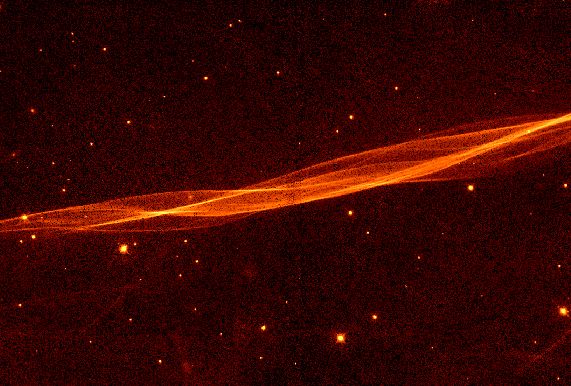
Filaments in the Cygnus Loop
Add to Favorites
Subtle and delicate in appearance, these are filaments of shocked interstellar gas -- part of the expanding blast wave from a violent stellar explosion. Recorded in November 1997 with the Wide Field and Planetary Camera 2 on board the Hubble Space Telescope, the picture is a closeup of a supernova remnant known as the Cygnus Loop. The nearly edge-on view shows a small portion of the immense shock front moving toward the top of the frame at about 170 kilometers per second while glowing in light emitted by atoms of excited hydrogen gas. Not just another pretty picture, this particular image has provided some dramatic scientific results. In 1999, researchers used it to substantially revise downward widely accepted estimates of distance and age for this classic supernova remnant. Now determined to lie only 1,440 light-years away, the Cygnus Loop is thought to have been expanding for 5 - 10 thousand years.
2003-01-18